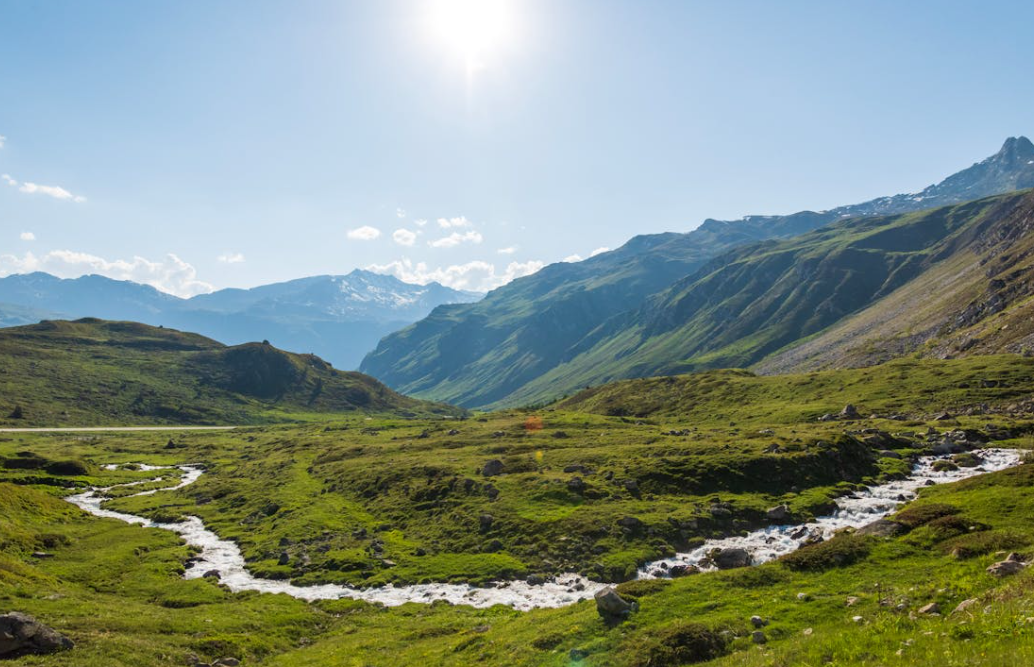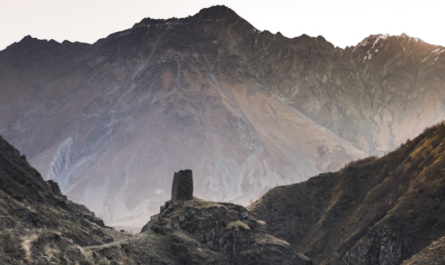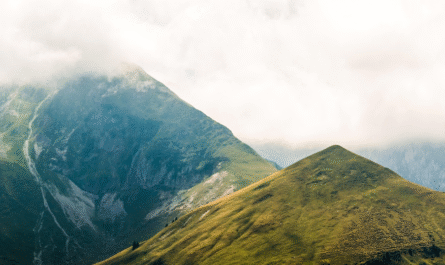Saint Moritz is renowned worldwide as a luxury winter resort, famous for its pristine snow, upscale lifestyle, and thrilling sports. However, beneath the glamour lies a delicate natural environment where wildlife thrives in a unique Alpine setting. The region’s rich biodiversity—ranging from resilient alpine flora to elusive animal species—depends on careful conservation measures to ensure that nature and tourism can coexist harmoniously. In this comprehensive guide, we explore how conservation efforts in Saint Moritz are protecting its wildlife, preserving critical habitats, and fostering a sustainable balance between economic development and ecological stewardship.
1. The Unique Wildlife of Saint Moritz
A. Biodiversity in the Alpine Environment
The Swiss Alps around Saint Moritz are home to a fascinating array of wildlife adapted to high-altitude conditions. The region’s varied ecosystems support:
- Alpine Flora: Hardy plant species, including edelweiss, gentians, and alpine roses, thrive despite the harsh climate. These plants have evolved unique survival strategies, such as deep root systems and compact growth forms, to withstand cold, wind, and limited soil nutrients.
- Birdlife: The skies above Saint Moritz are frequented by birds of prey like golden eagles and alpine choughs, along with various songbirds that add a vibrant soundtrack to the mountainous backdrop.
- Mammals: Species such as ibex, chamois, and marmots call the high meadows and rocky slopes home. These animals have adapted to extreme weather conditions and rugged terrains, making them symbols of the Alpine spirit.
- Invertebrates and Aquatic Life: The mountain streams and lakes support a variety of invertebrates, while the waters of the region host cold-water fish and unique aquatic species.
The interplay between these species creates an intricate web of life that is both fragile and resilient. Conserving this biodiversity is essential not only for maintaining natural balance but also for supporting the broader ecological functions of the region.
2. Conservation Efforts: Strategies and Initiatives
A. Protected Areas and Nature Reserves
One of the primary conservation strategies in Saint Moritz is the establishment of protected areas and nature reserves. These zones are critical for safeguarding wildlife habitats from overdevelopment and unsustainable tourism practices.
- Designated Conservation Zones: Local authorities have designated specific regions around Saint Moritz as conservation areas, where construction and other potentially disruptive activities are strictly regulated. These protected areas ensure that natural habitats remain undisturbed, allowing native species to thrive.
- Wildlife Corridors: In addition to fixed reserves, efforts are underway to maintain and restore wildlife corridors that connect fragmented habitats. These corridors enable animals to migrate, forage, and reproduce, thereby maintaining genetic diversity and ecological resilience.
B. Sustainable Tourism Practices
Tourism is a major economic driver in Saint Moritz, but it also poses risks to the local environment. To balance these interests, many initiatives focus on sustainable tourism practices that minimize environmental impact.
- Eco-Friendly Infrastructure: Luxury hotels, resorts, and recreational facilities in Saint Moritz are increasingly adopting eco-friendly practices. From energy-efficient buildings and water-saving technologies to waste management and recycling programs, these measures reduce the ecological footprint of tourism.
- Guided Eco-Tours: Many tour operators offer eco-tours that educate visitors about the local wildlife and conservation efforts. These guided excursions often include hiking, wildlife watching, and visits to nature reserves, emphasizing the importance of preserving the natural environment.
- Responsible Recreation: Conservation programs encourage visitors to follow designated trails, adhere to “leave no trace” principles, and respect wildlife. Signage and educational materials help raise awareness about the fragile Alpine ecosystem and the steps needed to protect it.
C. Community Involvement and Local Stewardship
Local communities play a crucial role in conservation. In Saint Moritz, the integration of community involvement into conservation efforts has proven to be highly effective.
- Community-Based Conservation: Local residents, often with generations of knowledge about the Alpine environment, are actively involved in conservation projects. Their traditional practices and insights are invaluable for sustainable resource management.
- Environmental Education: Schools, local organizations, and museums in the region conduct programs to educate both locals and visitors about the importance of biodiversity and conservation. Workshops, guided tours, and interactive exhibits highlight the rich wildlife of the area and the measures needed to protect it.
- Volunteer Programs: Numerous volunteer opportunities allow community members and tourists alike to participate in habitat restoration, wildlife monitoring, and conservation awareness campaigns. This hands-on involvement fosters a deep connection to the environment and a shared responsibility for its preservation.
D. Research and Monitoring Initiatives
Effective conservation relies on robust research and continuous monitoring of the environment. In Saint Moritz, collaborative research projects and technological innovations are at the forefront of conservation science.
- Long-Term Ecological Studies: Scientists conduct long-term studies to monitor population trends, habitat changes, and the overall health of the local ecosystems. These studies provide essential data that inform conservation strategies and policy decisions.
- Technological Innovations: Remote sensing, drone surveillance, and advanced data analytics allow researchers to track environmental changes in real time. For example, satellite imagery can reveal deforestation, glacial retreat, or shifts in vegetation patterns, while acoustic sensors monitor the presence of elusive wildlife.
- Citizen Science: Engaging the public in research through citizen science initiatives has also proven effective. Local residents and visitors can contribute by recording wildlife sightings, participating in biodiversity surveys, or using mobile apps designed for environmental monitoring.
3. Success Stories in Conservation
A. The Revival of Alpine Meadows
One of the notable success stories in Saint Moritz involves the revival of degraded alpine meadows. Through a combination of reforestation, sustainable grazing practices, and habitat restoration projects, local authorities and conservation groups have successfully rejuvenated these critical areas. The restored meadows now support a richer diversity of plant species, which in turn provide habitat for numerous insects and small mammals, contributing to a healthier ecosystem overall.
B. Protection of Endangered Species
Conservation efforts in the region have been pivotal in protecting endangered species that inhabit the high-altitude areas. For instance, the ibex and chamois populations have benefited from strict anti-poaching measures and habitat protection initiatives. By creating safe havens and regulating human activity in sensitive areas, these efforts have helped stabilize and even boost the populations of these iconic Alpine mammals.
C. Collaborative Conservation Programs
Collaborative projects between local governments, non-profit organizations, and international research institutions have yielded impressive results in preserving Saint Moritz’s wildlife. These partnerships have led to the implementation of comprehensive management plans that address issues such as habitat fragmentation, invasive species, and climate change impacts. One such program has successfully reduced pollution levels in mountain streams, leading to a significant recovery in the native fish and amphibian populations.
4. Challenges and the Road Ahead
A. Balancing Development and Conservation
Saint Moritz is a world-class luxury destination, and its economic success is closely tied to tourism and development. One of the ongoing challenges is balancing the demands of economic growth with the need to protect the natural environment. Unchecked development can lead to habitat destruction, pollution, and increased human-wildlife conflicts.
- Strategic Urban Planning: Integrating sustainable urban planning with conservation efforts is essential. This includes designing eco-friendly infrastructure, implementing zoning laws that protect sensitive areas, and promoting green building practices.
- Sustainable Tourism Policies: Governments and local authorities must continue to enforce and expand policies that promote sustainable tourism, ensuring that economic benefits do not come at the expense of environmental degradation.
B. Climate Change and Its Impact on Alpine Ecosystems
The effects of climate change pose significant challenges to the fragile Alpine ecosystems around Saint Moritz. Rising temperatures, altered precipitation patterns, and glacial retreat all have profound impacts on local wildlife and plant communities.
- Adaptive Management Strategies: Conservation programs must be flexible and adaptive, incorporating the latest climate research into their strategies. This may involve altering protected area boundaries, restoring habitats affected by climate change, and monitoring shifts in species distribution.
- International Cooperation: Addressing climate change requires global collaboration. Saint Moritz’s conservation efforts are part of a broader international movement aimed at mitigating climate change impacts and promoting resilience in vulnerable ecosystems.
C. Funding and Resource Allocation
Effective conservation requires significant financial and human resources. Securing long-term funding is often a challenge, particularly for projects that yield benefits over extended periods.
- Public-Private Partnerships: Collaborations between government agencies, private companies, and non-profit organizations can help pool resources and ensure the sustainability of conservation initiatives.
- Innovative Funding Mechanisms: Mechanisms such as environmental grants, green bonds, and community-based funding projects can provide additional financial support for conservation efforts.
5. The Broader Impact of Conservation in Saint Moritz
A. Economic Benefits
Preserving the natural environment is not only crucial for ecological reasons—it also has significant economic implications. Healthy ecosystems support tourism, which is a major revenue source for Saint Moritz.
- Tourism Attraction: Pristine natural landscapes and vibrant wildlife are major draws for tourists. Visitors who appreciate nature and sustainability are more likely to return and recommend the destination to others.
- Local Employment: Conservation initiatives create jobs in research, eco-tourism, and habitat restoration. These opportunities support the local economy and foster a sense of community pride.
B. Social and Cultural Benefits
Conservation efforts contribute to the social and cultural fabric of Saint Moritz. By preserving natural landmarks and wildlife, the region maintains its unique identity and heritage.
- Cultural Heritage: The landscapes and wildlife of the Alps are integral to the cultural identity of the local community. Preserving these natural treasures helps maintain traditions, folklore, and a shared sense of history.
- Community Engagement: Conservation projects often involve local residents, encouraging community participation and education. This engagement fosters a collective commitment to preserving the region for future generations.
- Quality of Life: A clean, healthy environment enhances the quality of life for everyone. Residents and tourists alike benefit from reduced pollution, improved public spaces, and access to nature.
C. Global Environmental Impact
The conservation efforts in Saint Moritz have ripple effects beyond the local level. Healthy Alpine ecosystems play a role in global environmental processes, such as water purification, carbon sequestration, and climate regulation.
- Carbon Sequestration: Alpine vegetation and well-managed forests help capture carbon dioxide, mitigating the effects of climate change.
- Biodiversity Conservation: The preservation of unique species in the Alps contributes to global biodiversity, ensuring that genetic resources remain available for research and potential future applications.
- Model for Sustainable Development: Saint Moritz’s approach to balancing luxury tourism with environmental conservation can serve as a model for other destinations around the world. It demonstrates that economic development and environmental stewardship can coexist and even complement each other.
6. Future Directions in Conservation
A. Advancements in Technology
Technology continues to revolutionize conservation efforts, providing new tools and methods to monitor and protect wildlife. In the future, we can expect further integration of advanced technologies in conservation strategies in Saint Moritz:
- Drones and Remote Sensing: Unmanned aerial vehicles (drones) and satellite imagery are increasingly used to monitor vast and inaccessible areas, track changes in vegetation, and assess the health of wildlife populations.
- Artificial Intelligence: AI-driven data analytics can process vast amounts of environmental data, identifying patterns and predicting changes in ecosystems. This information is crucial for proactive conservation management.
- Real-Time Monitoring: Sensors and IoT devices placed throughout protected areas can provide real-time data on water quality, air pollution, and wildlife activity, enabling immediate response to environmental threats.
B. Strengthening Legal Frameworks
For conservation efforts to be effective, robust legal frameworks must be in place. This includes:
- Stricter Regulations: Implementing and enforcing regulations on development, pollution, and resource extraction in sensitive areas.
- International Agreements: Collaborating with international bodies to establish global standards for conservation and sustainable tourism.
- Community-Based Legal Initiatives: Empowering local communities to participate in the enforcement of conservation laws and report violations.
C. Enhancing Community Involvement
Future conservation efforts will benefit from even greater community involvement:
- Citizen Science Programs: Expanding programs that allow locals and tourists to contribute to wildlife monitoring and environmental research can create a more engaged and informed community.
- Educational Outreach: Strengthening educational initiatives in local schools and community centers about the importance of conservation fosters a culture of stewardship.
- Collaborative Projects: Partnering with local businesses, non-profit organizations, and government agencies ensures that conservation strategies are holistic and sustainable.
D. Sustainable Tourism Integration
The growth of sustainable tourism in Saint Moritz is a promising avenue for future conservation:
- Eco-Tourism Packages: Developing eco-friendly tourism packages that emphasize low-impact travel, conservation education, and community engagement.
- Green Certifications: Encouraging tourism operators and accommodations to obtain green certifications can ensure that visitors support environmentally responsible practices.
- Visitor Awareness Campaigns: Implementing campaigns that educate tourists about local wildlife and conservation challenges, promoting responsible behavior during visits.
7. Conclusion: A Legacy of Preservation and Harmony
The conservation efforts in Saint Moritz are a testament to the region’s commitment to preserving its natural heritage amid the pressures of modern tourism and development. By protecting its unique wildlife and ecosystems, Saint Moritz not only safeguards its environmental integrity but also enhances its appeal as a world-class destination where luxury and nature coexist harmoniously.
From the establishment of protected areas and the promotion of sustainable tourism to the use of cutting-edge technology and community engagement, every initiative plays a crucial role in maintaining the delicate balance of the Alpine ecosystem. These efforts ensure that the rich biodiversity of the region continues to thrive, providing benefits that extend far beyond the local environment—supporting global ecological processes, inspiring cultural pride, and setting a benchmark for sustainable development worldwide.
As we look to the future, the lessons learned in Saint Moritz serve as a guiding light for conservation efforts across the globe. By embracing innovation, fostering collaboration, and empowering local communities, we can create a legacy of preservation that will benefit generations to come.
For nature lovers, environmentalists, and travelers alike, the efforts to protect Saint Moritz’s wildlife are a powerful reminder that sustainable living is not just an ideal—it’s a tangible, achievable goal. Every step taken to safeguard these majestic landscapes is a commitment to a future where economic prosperity and ecological health walk hand in hand.
So, whether you’re visiting Saint Moritz for its luxurious resorts, thrilling sports, or natural beauty, take a moment to appreciate the conservation efforts that ensure this unique environment remains vibrant and alive. By supporting sustainable practices and responsible tourism, you become part of a global movement dedicated to preserving the natural wonders of our world.
Embrace the beauty of Saint Moritz, celebrate its rich biodiversity, and join in the effort to protect a legacy of nature, culture, and harmony that defines this extraordinary corner of the Alps.



